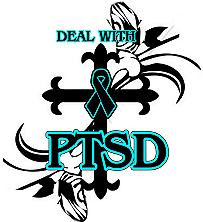PTSD
(also known as PTSS – Posttraumatic Stress Syndrome)
What is post-traumatic stress disorder, or PTSD?
Post-Traumatic Stress Disorder (PTSD) is an anxiety disorder that some people get after seeing or living through a dangerous event. When in danger, it’s natural to feel afraid. This fear triggers many split-second changes in the body to prepare to defend against the danger or to avoid it. This “fight-or-flight” response is a healthy reaction meant to protect a person from harm. In PTSD, this reaction is changed or damaged. People who have PTSD may feel stressed or frightened even when they’re no longer in danger.
Who gets PTSD?
Anyone can get PTSD at any age. This includes war veterans and survivors of physical and sexual assault, abuse, accidents, disasters and many other traumatic events. Not everyone with PTSD has been through a dangerous event. Some people get PTSD after a friend or family member experiences danger or harm. The sudden, unexpected death of a loved one can also cause PTSD.
What are the symptoms of PTSD? PTSD can cause many types of symptoms. The symptoms can be generally grouped into three categories:
Re-experiencing symptoms:
- Flashbacks—the trauma is relived over and over and includes physical symptoms such as elevated heart rate and perspiration
- Nightmares
- Frightening thoughts
Re-experiencing symptoms may cause problems in a person’s everyday routine. They can start from the person’s own thoughts and feelings or from outside words, objects or situations that trigger re-experiencing.
Avoidance symptoms:
- Staying away from places, events or objects that are reminders of the experience
- Feeling emotionally numb
- Feeling strong guilt, depression or worry
- Losing interest in activities that were enjoyable in the past
- Having trouble remembering the dangerous event
Things that remind a person of the traumatic event can trigger avoidance symptoms. These symptoms may cause a person to change his or her personal routine. For example, after a bad car accident, a person who usually drives may avoid driving or riding in a car.
Hyper-arousal symptoms:
- Being easily startled
- Feeling tense or “on edge”
- Having difficulty sleeping, and/or having angry outbursts
Hyper-arousal symptoms are usually constant, instead of being triggered by things that remind one of the traumatic event(s). They can make the person feel continually stressed and angry, making it difficult to do daily tasks, such as sleeping, eating or concentrating.
It’s natural to have some of these symptoms after a dangerous event. Sometimes people have very serious symptoms that go away after a few weeks. This is called acute stress disorder, or ASD. When the symptoms last more than a few weeks and become an ongoing problem, it might be PTSD. Some people with PTSD don’t show any symptoms for weeks or months.
Why do some people get PTSD and other people do not? It is important to remember that not everyone who lives through a dangerous event gets PTSD. In fact, most will not get the disorder.
Many factors play a part in whether a person will get PTSD. Some of these are risk factors that make a person more likely to get PTSD. Other factors, called resilience factors, can help reduce the risk of the disorder. Some of these risk and resilience factors are present before the trauma and others become important during and after a traumatic event.
Risk factors for PTSD include:
- Living through dangerous events and traumas
- Having a history of mental illness
- Getting hurt
- Seeing people hurt or killed
- Feeling horror, helplessness or extreme fear
- Having little or no social support after the event
- Dealing with extra stress after the event, such as loss of a loved one, pain and injury, or loss of a job or home
Resilience factors that may reduce the risk of PTSD include:
- Seeking out support from other people, such as friends and family
- Finding a support group after a traumatic event
- Feeling good about one’s own actions in the face of danger
- Having a coping strategy, or a way of getting through the bad event and learning from it
- Being able to act and respond effectively despite feeling fear.
-
Researchers are studying the importance of various risk and resilience factors. With further researcher, it should become possible to predict who is likely to get PTSD, how resilience can be learned and prevent it.




Post traumatic stress disorder
A disorder in which a person has difficulty recovering after experiencing or witnessing a terrifying event.
The condition may last months or years, with triggers that can bring back memories of the trauma accompanied by intense emotional and physical reactions.
Symptoms may include nightmares or unwanted memories of the trauma, avoidance of situations that bring back memories of the trauma, heightened reactions, anxiety, or depressed mood.


